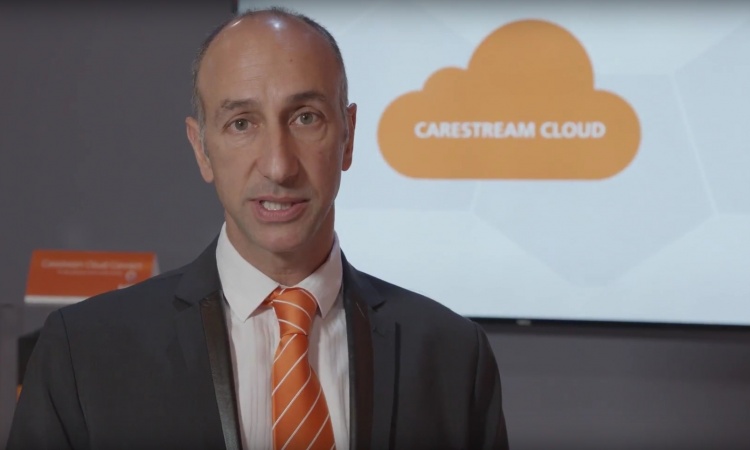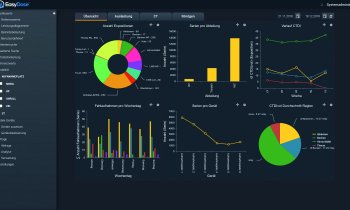Article • DICOM & IHE
ECDP: Spanish pathologist highlights image storage issues
Compressing and storing digital images in pathology remains technically challenging but there are many options that can both help reduce costs and improve efficiency, a Spanish expert will explain in a dedicated talk during ECDP in Berlin.
Report: Mélisande Rouger

High-resolution digital pathology images can weigh up to 1GB. Loaded with information on the patient’s clinical situation, these pictures are a goldmine for investigation and can help tailor treatment to each patient. Digital pathology image analysis already helps quantify biomarkers for cancer treatment and could soon enable to detect tumor areas just like mammography, according to Marcial García Rojo, director of the pathology department at General Hospital (GH) Jerez de la Frontera in Cadiz, Spain. “Microscope images already enable to identify suspicious areas. The big plus is efficiency; image analysis saves us a lot of time,” he said.
These possibilities trigger a growing need for images. But as more and more pictures are generated, they occupy more and more space and current storage systems offered by the industry are unsustainable, Rojo believes. “For example our team generates about 150 digital slides a day. 150GB of images multiplied by 200 working days a year, that’s about 20TB of information volume per year. It’s impossible to sustain this rhythm much longer if we can’t find cheaper storing solutions. Besides manufacturers only reduce the size of images from 1GB to 800MB without losing important information; that’s good but insufficient,” he said.
Rojo, a pathologist who trained in medical IT extensively, has been working on digital pathology scanners since 2005. He now focuses on transforming pathology images to DICOM to move them onto standardized DICOM servers and repositories, one of the best options to reduce space and costs. “Images generated with DICOM can be even smaller than those generated in owner format,” he explained ahead of his talk about standardization in pathology with DICOM and IHE.
Following the radiology example, pathologists can store images in a dedicated picture archiving computer system (PACS). They can also save images on discs and films, a slower but significantly cheaper alternative. “The point is to use something that is economically relevant to store the huge amount of information and images we need today,” he said.
Pathologists can also use low cost vendor-neutral archive (VNA) systems to store images in a repository cheaper than the one used for radiology images. Several companies, including Agfa HealthCare, Carestream Health, GE Healthcare and Merge Healthcare, now offer VNA products either in-house or through acquisitions.
The point is to use something that is economically relevant to store the huge amount of information and images we need today,
Dr. Marcial García Rojo
Another possibility is to erase the images after a given period of time. Pictures do not need to be saved forever; the paraffin block, from which images and slices can be generated anytime, always remains as a back up for future investigation in molecular pathology or genomics.
25 public hospitals are equipped with digital pathology scanners in Spain, but only five use them in clinical practice: GH Jerez de la Frontera, University Hospital Arnau de Vilanova in Lerida, University Hospital in Ciudad Real, and Barcelona’s Del Mar Hospital and University Hospital Clínic. The latter leads the way with up to 300 preparations a day. Several digitalization projects for private clinical practice are underway across Spain. Santa Lucia University Hospital in Murcia offers telepathology services to the rest of the country.
“Spanish digital pathology is doing well. Almost every pathology department now digitalizes preparations. Sweden, Norway and the Netherlands are still leaders in clinical practice, but the situation across Europe is very irregular. We’re doing what we can to stay ahead of the curve,” Rojo said.
Profile:
Dr. Marcial García Rojo is director of the pathology department at Hospital de Jerez de la Frontera in Cádiz, Spain. From 2009 to 2013 he was head of the pathology department at Ciudad Real University Hospital and associate professor of pathology at the Medical School of Castilla-La Mancha University. He is president of the Ibero-American Association for Telemedicine and Telehealth (IATT) for the term 2015 -2017. He is also vice-president of the Spanish Society of Health Informatics (SEIS), Spanish representative on the International Medical Informatics Association (IMIA) board and past-president of the Internet Association for Biomedical Sciences (INABIS).
He is collaborating as a researcher in European projects on digital pathology such as AIDPATH (Academia and Industry Collaboration for Digital Pathology). His main research areas are medical informatics standards in digital pathology and molecular pathology.
22.05.2016











